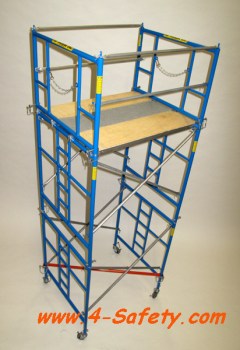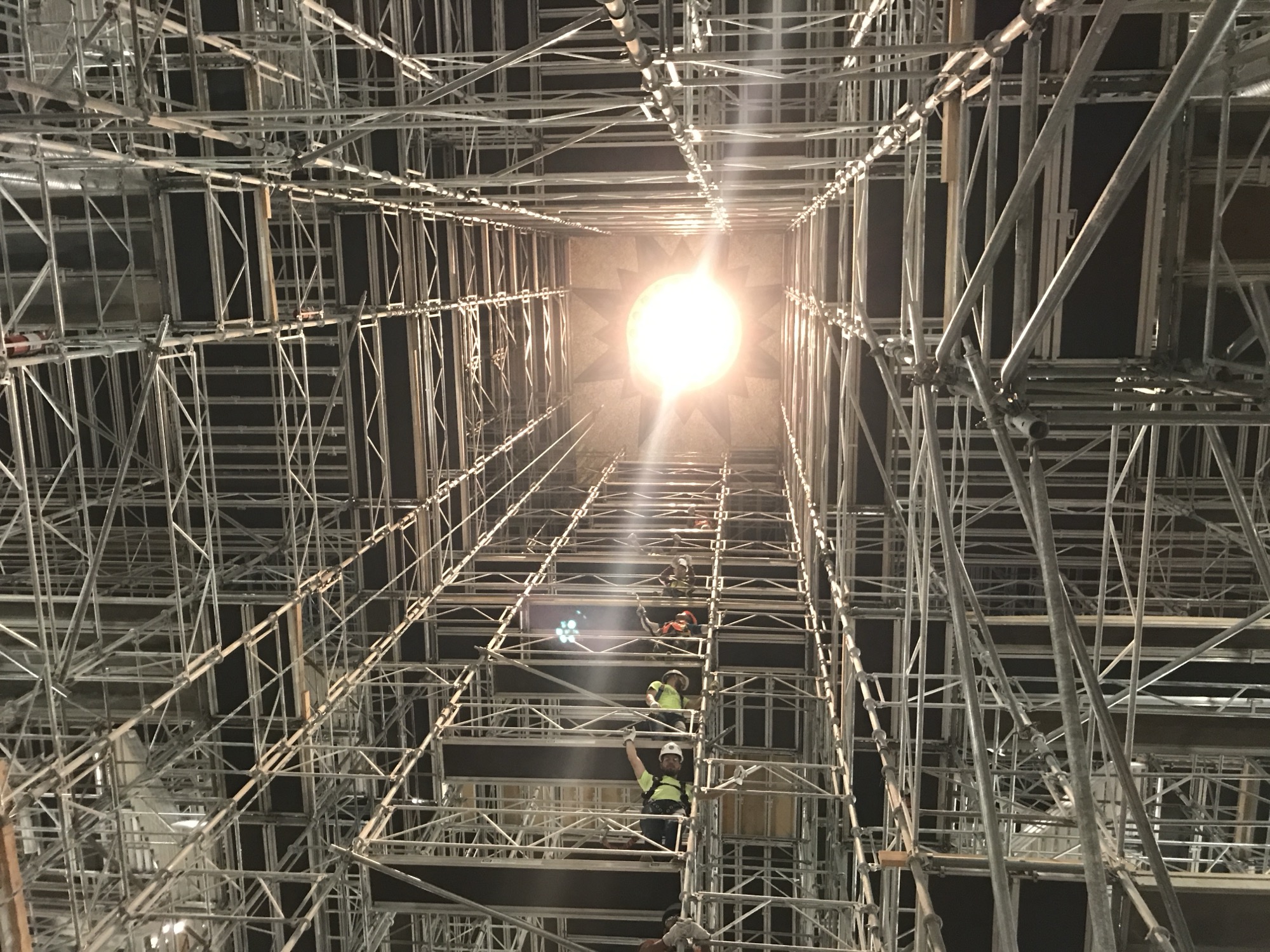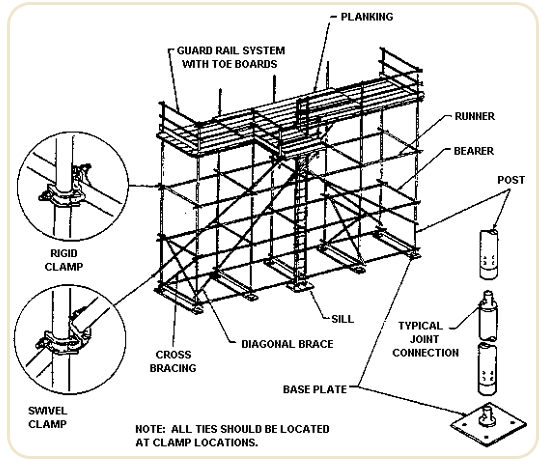Checking Out the Different Kinds Of Scaffolding Made Use Of in Building And Construction Jobs
The construction industry depends greatly on numerous kinds of scaffolding to meet certain task requirements, each offering distinctive advantages and applications. Standard structure scaffolding provides a strong structure for basic tasks, while suspended scaffolding is vital for job on skyscraper frameworks.

Traditional Structure Scaffolding
Traditional structure scaffolding is one of one of the most extensively used techniques in the construction market due to its effectiveness and adaptability. This system includes upright and horizontal frameworks that are put together to create a steady system for employees and materials. The main components consist of upright posts, straight ledgers, and angled dental braces, which with each other offer a strong structure that can sustain considerable lots.
Among the key advantages of conventional structure scaffolding is its adaptability to various building and construction tasks, ranging from property structures to huge business structures. The modular style permits simple setting up and disassembly, making it efficient for both short-term and long-term jobs. Furthermore, the system can be tailored in height and width, accommodating different building designs and site problems.
Safety is vital in scaffolding applications, and typical framework systems are furnished with guardrails and toe boards to stop drops and ensure worker security. Normal examinations and adherence to security guidelines are vital in preserving the stability of the scaffold (Scaffolding). On the whole, traditional frame scaffolding continues to be a basic choice in the construction industry, giving a trustworthy system for labor and boosting general project performance

Suspended Scaffolding
Put on hold scaffolding provides an one-of-a-kind solution for building projects that call for access to raised surface areas, especially in situations where standard frame scaffolding may be impractical. This kind of scaffolding is usually suspended from the roof or upper degrees of a framework, making use of a system of ropes, pulley-blocks, and systems to develop a functioning room that can be changed to numerous elevations.
Among the key advantages of suspended scaffolding is its versatility. It can be conveniently rearranged or lowered to fit adjustments in building and construction requirements, making it ideal for tasks such as window setup, frontage work, and upkeep on skyscraper buildings. Additionally, the marginal footprint of put on hold scaffolding enables better use ground area in urban environments, where space is typically minimal.
Safety is a vital factor to consider in the use of put on hold scaffolding. Appropriate rigging and anchoring systems should be utilized to ensure security and protect against crashes. Operators has to additionally be educated in the risk-free use of this equipment. In general, put on hold scaffolding supplies a efficient and efficient service for accessing hard-to-reach areas in numerous construction situations, improving both productivity and safety and security on website.
System Scaffolding
System scaffolding, commonly pertained to as a modern option in the scaffolding market, contains pre-engineered components that can be rapidly assembled and adjusted for various construction tasks. Scaffolding. This type of scaffolding is characterized by its modular layout, which enables for flexibility and efficiency on task websites, accommodating architectural requirements and various elevations
Generally made from high-strength steel or aluminum, system scaffolding offers boosted durability and stability. The components include upright posts, straight ledgers, and angled braces, which interconnect safely, making sure a robust framework. The style often includes standardized installations, streamlining assembly and disassembly processes, consequently reducing labor time and expenses.

Rolling Scaffolding
Moving scaffolding is a flexible alternative to traditional set scaffolding, designed for wheelchair and convenience of usage on construction sites. This type of scaffolding includes a platform sustained by frameworks with wheels, permitting workers to conveniently move it as needed. The mobility attribute substantially enhances efficiency, as it reduces downtime related to disassembling and constructing taken care of scaffolding.
Usually created from lightweight products such as aluminum or steel, rolling scaffolding offers a strong yet mobile service for tasks needing frequent repositioning - Scaffolding. It is especially useful in tasks such as paint, drywall installation, and electrical job, where accessibility to numerous heights scaffold terminology and locations is necessary
Safety and security is paramount in rolling scaffolding style, with attributes such as locking wheels to protect against unexpected activity when in use, and guardrails to shield workers from drops. Additionally, numerous designs are flexible in elevation, accommodating different job demands.
Cantilever Scaffolding

The design of cantilever scaffolding generally involves utilizing brackets or arms anchored to a structure or structure, making it possible for the platform to prolong outside securely. Security is extremely important; thus, these scaffolds must be crafted to withstand environmental problems and numerous lots. Routine assessment and upkeep are necessary to ensure structural stability and worker safety.
Cantilever scaffolding is preferred for its adaptability and effective usage of area, making it a preferred selection in urban environments where space restrictions prevail. It helps with much easier accessibility to high elevations, ultimately contributing to the general effectiveness of building and construction projects. Similar to all scaffolding kinds, proper training and adherence to safety requirements are important for workers making use of cantilever scaffolding.
Verdict
Standard framework scaffolding offers stability, while put on hold scaffolding provides convenience for elevated jobs. System scaffolding helps with fast assembly, and rolling scaffolding boosts movement for differing job environments.
Traditional frame scaffolding provides a strong foundation for general tasks, while put on hold scaffolding is crucial for job on skyscraper structures.Moving scaffolding is a flexible choice to traditional set scaffolding, created for wheelchair and convenience of use on building sites. As with all scaffolding kinds, proper training and adherence to security criteria are important for employees utilizing cantilever scaffolding.
Standard frame scaffolding provides security, while put on hold scaffolding offers adaptability for elevated tasks. System scaffolding promotes quick assembly, and rolling scaffolding improves movement for differing job settings.